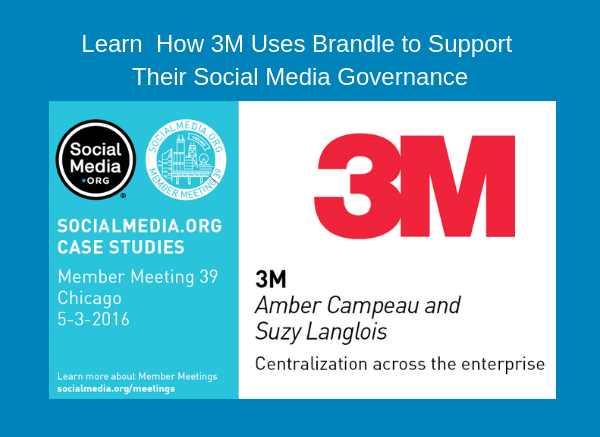
Social media governance is a two-pronged approach. The first aspect of social media governance relates to protecting a business’s brand from internal and external threats. The second is directed at improving brand reputation. Companies that focus on both of these areas will ultimately protect and strengthen the corporate brand. This article will focus on how to optimize your brand reputation in four steps:
Consolidate Social Properties
Before a business can begin to improve its brand reputation, it must have a clear picture of its current digital presence. This involves discovering unknown points-of-presence (POPs) and applying basic governance tactics to them. If a business doesn’t have a grasp of its full digital landscape, then the risks to the brand are completely unknown. If the risks are unknown, then a strong digital brand reputation is unlikely.
Assuming that a company has already laid the groundwork for social media governance, then the first way to improve brand reputation is to shut down counterfeit and sites that present high risk to the company. The next task is to consolidate low-performing social media properties and rogue accounts. These are accounts that aren’t reaching engagement projections and/or are hurting your brand reputation. Businesses can either 1) merge these unsuccessful accounts with other accounts or 2) shut them down completely. The decision whether to merge an account or close it is best made on a case-by-case basis.
Apply Brand Standards
Inconsistencies in brand standards across multiple accounts will make a business more vulnerable to counterfeiters and phishers, and they will also harm brand reputation on their own. Accounts that fail to adhere to brand standards may have avatars with low-visibility or incomplete platform verification. These factors can negatively affect consumer trust and weaken a company’s brand.
Apply Corporate and Regulatory Standards
For businesses in a regulated industry, the first step to improve brand reputation should be to apply regulatory standards to all accounts (such as mortgage and financing companies).
The next step for improving brand reputation is to apply corporate standards (for policy adherence and for adherence to brand standards).
Track ROI and KPIs
Tracking ROI and KPIs serves two purposes. For one, it allows social team members the ability to display the fruits of their labor. Great results without tangible data to back them up can prevent budget allocation needed to keep the digital landscape clean. The other function of tracking ROI and KPIs is to determine which areas of a social media governance strategy are thriving and which could still use extra work. A few examples of KPIs worth keeping an eye on include:
- Speed of responding to risk events
- Total number of risk events
- Stale accounts and counterfeit accounts found and shut down
- Employee compliance ratio
- Employee training completion metrics
These are just a few samples of KPIs that businesses may want to track. Depending on a company’s size, experience level, and goals, these KPIs may change in priority.
Conclusion
Once a company takes measures to protect its digital footprint, it can increase its brand reputation online. These four methods will help both corporate and local social media professionals create a consistent and strong brand reputation. For more information about social media governance and how to implement social media governance best practices, contact Brandle today. We have the resources and the experience to help your company enhance its brand reputation.









